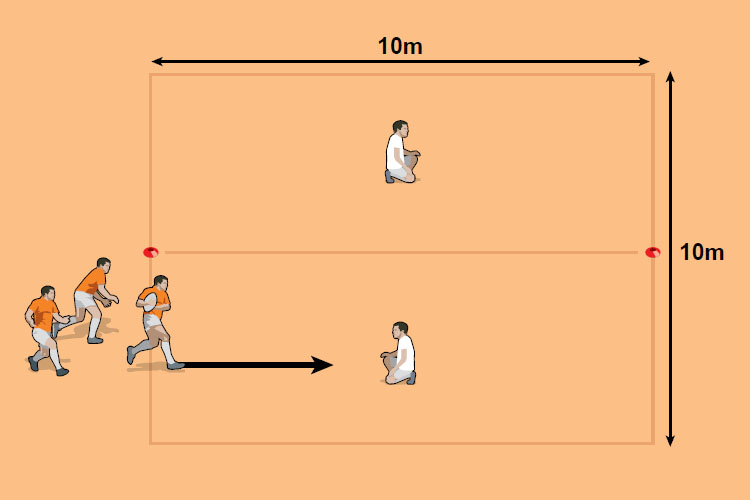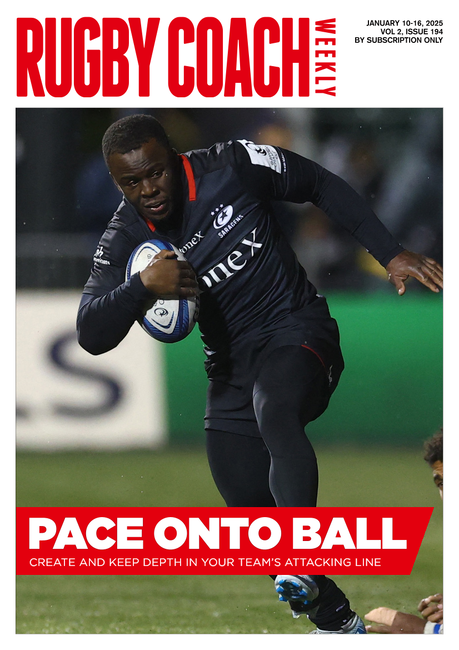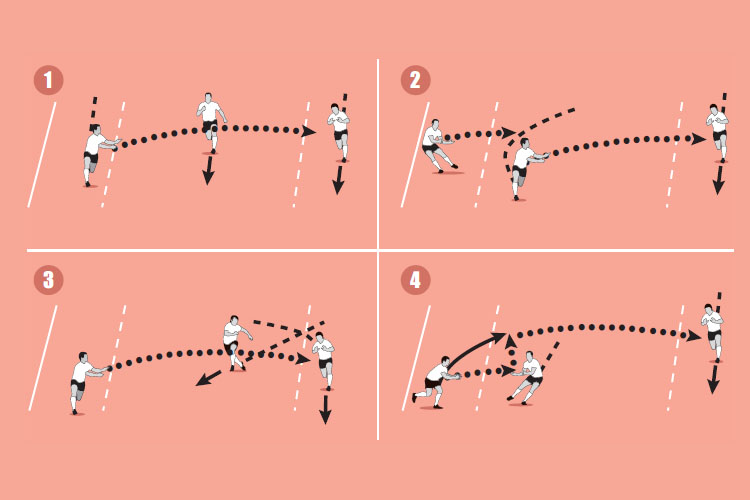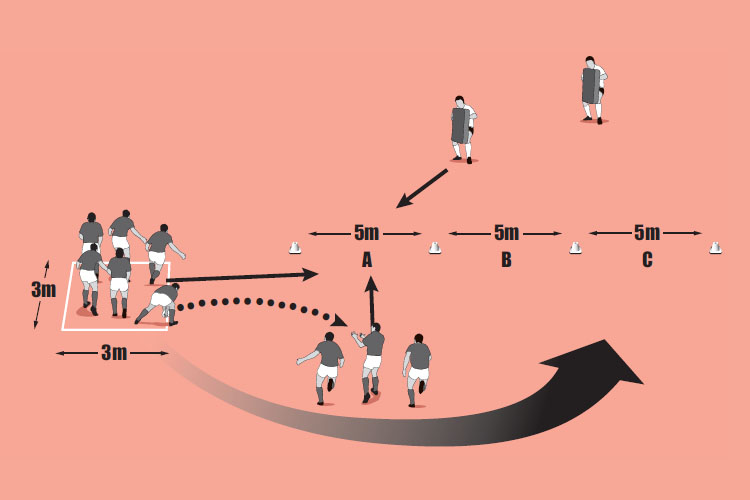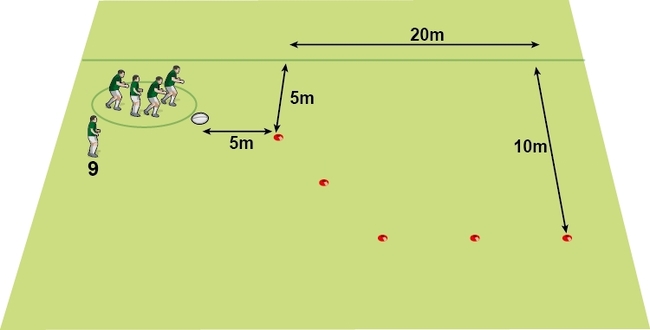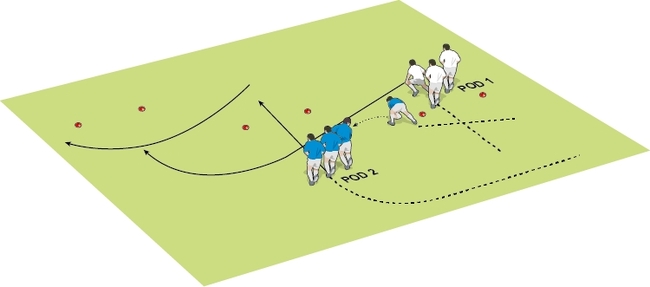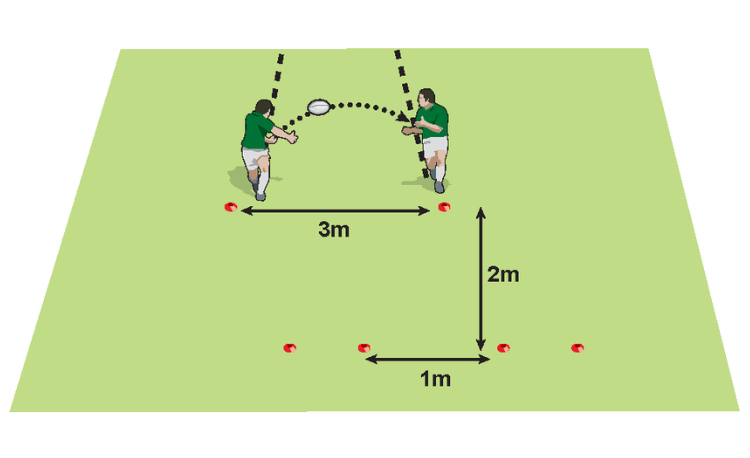Offload options
We know a simple offloading game can devastate defences. Players need the skills and the confidence to know exactly how and when to offload. This session builds the technique in a game-related way so the passer and receiver can understand their options.
Warm up time: 5-7
Session time: 8-10
Development time: 10-15
Game time: 10-15
Warm down time: 5-8
What to think about
Avoid players getting into a fixed mindset about how to offload the ball. They should always aim to beat a defender first and then offload, whether with a twohanded or one-handed pass. Younger players often don’t fall or tackle properly in these exercises. The half-hearted attempt from both players immediately negates the benefits. Find soft ground to fall on if possible. Also work for short, intense periods, asking for a high standard rather than lots of attempts with dwindling concentration and success.set-up
- Aim to get beyond the defender before offloading. If you cannot do this, turn towards your team mate.
- Hold your run in support and don’t commit to left or right until the ball carrier makes his move.
What you get your players to do
Put two defenders on their knees about 5m apart (see top picture ). Put a ball carrier in front of the first defender and a support player behind the ball carrier. Get the attacker to run at the defender who comes off his knees to tackle the ball carrier at waist height or below. The ball carrier aims to offload for the next player who runs at the next defender and the tackle style is repeated. The tackled player aims to get off the ground and in position to take an offload. Do three times and swap roles.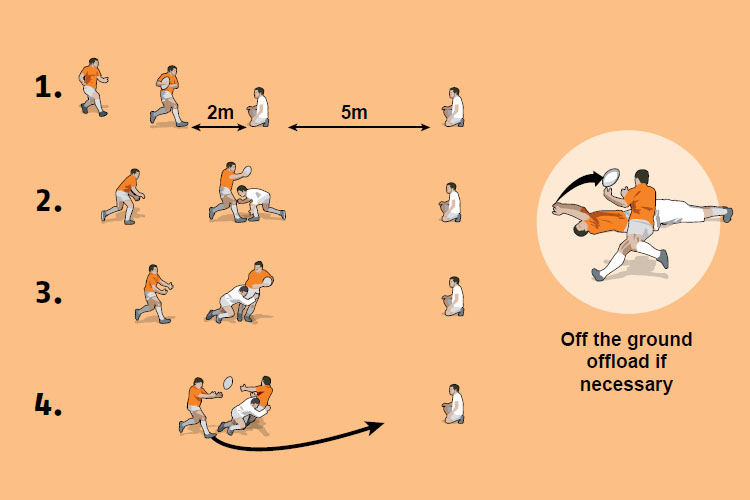
Development
Put a defender in each half of a 10m square split into two channels (see middle picture ). Get three attackers to run into one channel, with the first player taking the tackle and offloading. The players then run around into the second box and repeat (see bottom picture ). This continues for three circuits. The key is that players recycle themselves and the offloader does not pass to a player who is not in position.Game situation
Play a game of 3 v 3 for one minute in a 10m square. Both teams start on their try line. Play full contact. If a ruck or maul forms then the ball is turned over. After a try, the scoring team restarts play.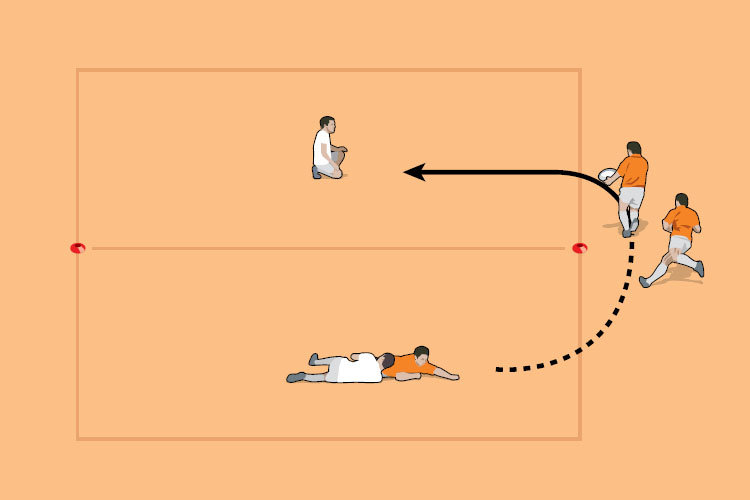
What to call out
- “Use footwork before contact”
- “Don’t pass unless there is communication”
- “Only take a pass standing still if the tackled player has lost the tackle”
Newsletter Sign Up
Coaches Testimonials

Gerald Kearney, Downtown Las Vegas Soccer Club

Paul Butler, Florida, USA

Rick Shields, Springboro, USA

Tony Green, Pierrefonds Titans, Quebec, Canada
Subscribe Today
Be a more effective, more successful rugby coach
In a recent survey 89% of subscribers said Rugby Coach Weekly makes them more confident, 91% said Rugby Coach Weekly makes them a more effective coach and 93% said Rugby Coach Weekly makes them more inspired.
Get Weekly Inspiration
All the latest techniques and approaches
Rugby Coach Weekly offers proven and easy to use rugby drills, coaching sessions, practice plans, small-sided games, warm-ups, training tips and advice.
We've been at the cutting edge of rugby coaching since we launched in 2005, creating resources for the grassroots youth coach, following best practice from around the world and insights from the professional game.
